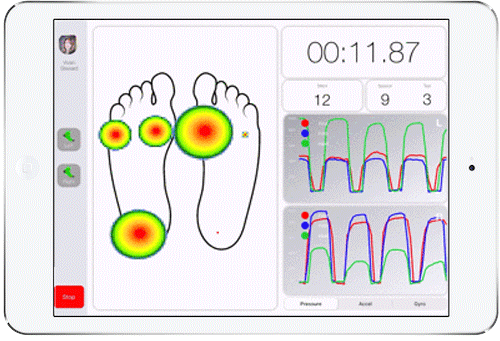Mobility
a SMARTER solutionProgressive Mobility
A powerful patient mobility program can have a tremendous impact on a patient’s progression and overall outcomes while in the hospital. Integration of a progressive mobility program into routine medical care can help to identify high readmission risks, and better use resources that can dramatically impact a patient's length of stay.
Objective Data = Better Results
Patient assessments have never been easier or more consistent.
Live Heat-Mapping
Easily demonstrate problem areas with live pressure profile visuals.
Progress Charts
Patient teach back has never been easier!

Data
Driven
Consistent results. Every test, Every step. Every Patient.
Weight Distribution
Provides post-evaluation validation to help the patients' understanding.


Born from Necessity
Actionable gait and distribution information is displayed in a variety of ways, including: graphs, pressure percentages, and tables to allow for rapid identification of asymmetries, abnormalities or treatment effectiveness.
Understanding the Metrics
Duration
The total amount of time if patient takes to complete a single assessment.
Cadence
The number of cycles in a minute. Cadence is different from speed, since a small person may have to walk with a higher cadence to have the same speed than a much taller person. Cadence has been shown to be a stable parameter over age (Winter et al., 1990).
Distance
The total distance the patient travels.
Stride Length
Describes the distance between two successive footprints on the ground, from the heel of a foot to the heel of the same foot, one cycle after. This parameter may be strongly influenced by anthropometric factors: if the subject is tall, he may have a higher stride length
Gait Speed
The forward speed of one cycle. It is a general measure of subject’s fitness since higher speed is a marker of more confidence and physical ability.
Distribution
The total percentage of weight distribution between the patient's left and right foot.
Number of Steps
The total number of steps the patient takes during an assessment.
Toe Strike
The number of times a patient's foot contacts the ground toes-first during the foot strike phase of a mobility assessment walking.
Heel Strike
The number of times a patient's foot contacts the ground heel-first during the foot strike phase of a mobility assessment walking.


